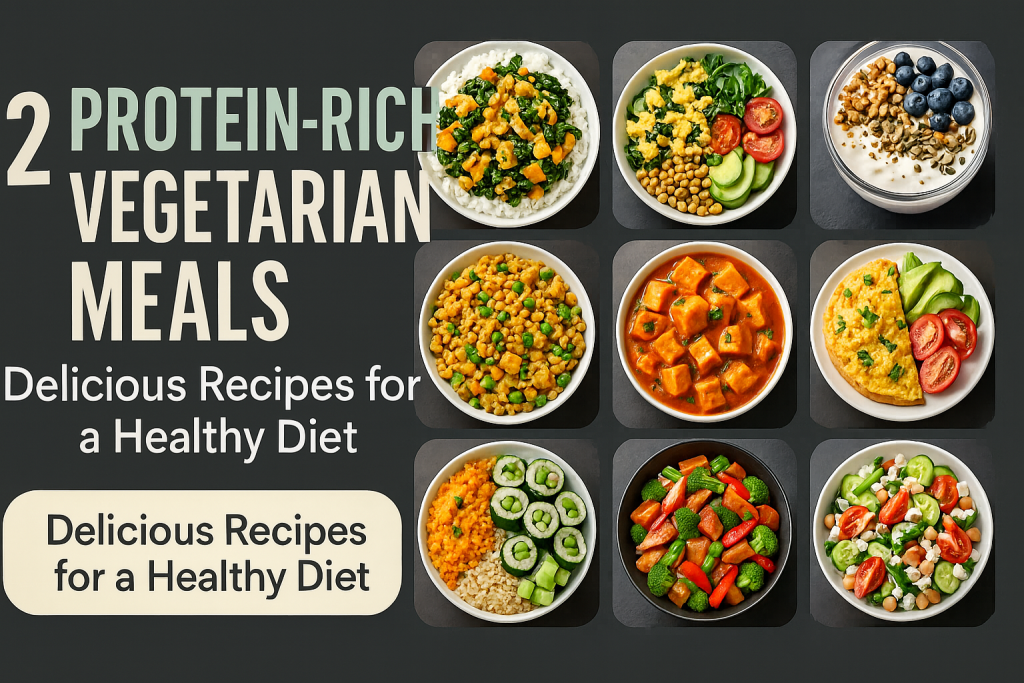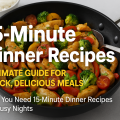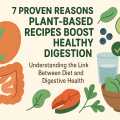Why Protein Matters in a Vegetarian Diet
Protein is a vital macronutrient required for building muscle, repairing tissues, and supporting a healthy immune system. For vegetarians, getting enough protein can be challenging, but it’s entirely possible with the right meal choices. Diverse plant-based foods provide high-quality protein without the need for meat, making them perfect for anyone seeking a balanced and nutritious diet.
Consuming protein-rich vegetarian meals helps maintain energy levels, keeps you feeling full longer, and supports overall health. With a thoughtful selection of ingredients, a vegetarian diet can easily meet—and even exceed—daily protein requirements.
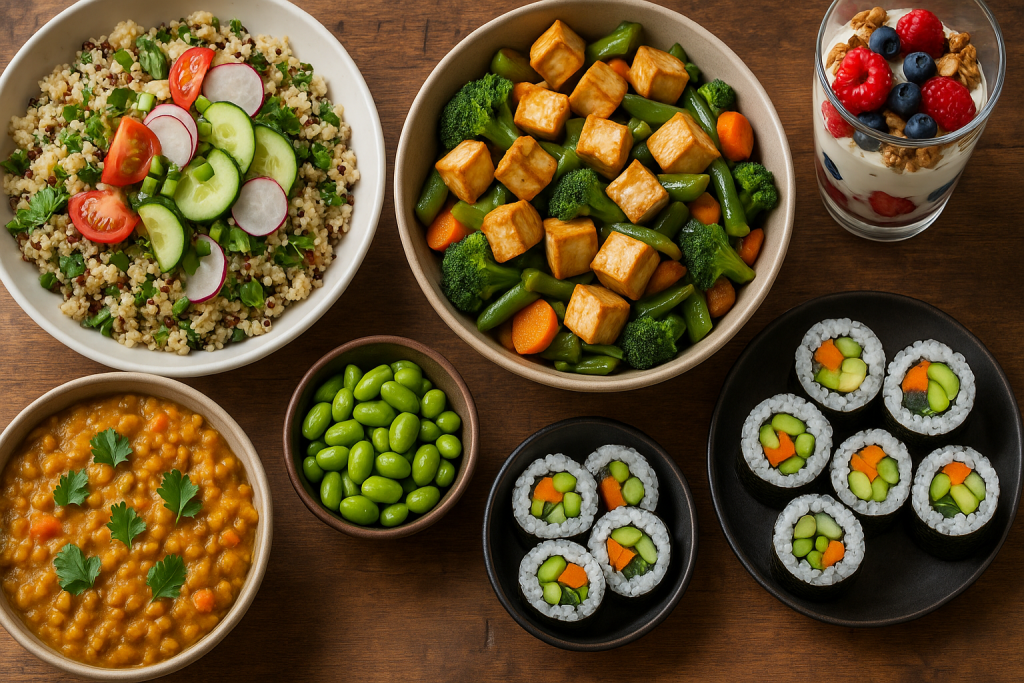
Top Vegetarian Protein Sources
Before diving into specific meals, it’s essential to recognize the best plant-based protein sources. By incorporating a variety of these foods, you can ensure an adequate intake of all essential amino acids.
- Legumes: Lentils, chickpeas, black beans, and kidney beans
- Soy Products: Tofu, tempeh, edamame
- Dairy Products: Greek yogurt, cottage cheese, cheese (for lacto-vegetarians)
- Eggs (for ovo-vegetarians)
- Whole Grains: Quinoa, brown rice, farro, millet
- Nuts and Seeds: Almonds, chia seeds, pumpkin seeds, hemp seeds
- Seitan and Plant-Based Meat Alternatives
Aim to combine different sources across meals for optimal nutrition.
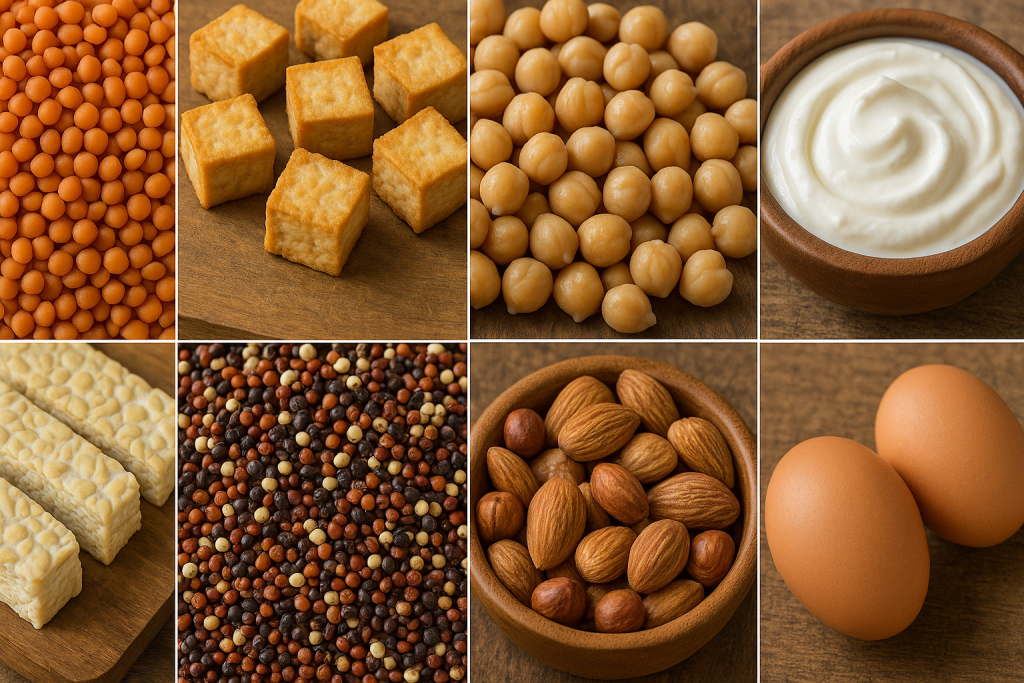
12 Protein-Rich Vegetarian Meals to Try
Here are 12 satisfying and nutritious high-protein vegetarian meals that are packed with flavor and easy to prepare at home.
1. Lentil and Vegetable Stir-Fry
Lentils are among the highest plant-based protein sources. A stir-fry combining lentils with mixed vegetables such as bell peppers, broccoli, and carrots creates a balanced meal rich in protein, fiber, and micronutrients.
Pro Tip: Cook lentils in advance for quick meal prep and add your favorite stir-fry sauce for extra flavor.
2. Tofu Scramble with Spinach and Mushrooms
Replace eggs with crumbled tofu for a protein-packed breakfast or brunch. Sautee tofu with fresh spinach, mushrooms, onions, and your choice of spices for a hearty start to your day.
Protein Boost: Add nutritional yeast for a cheesy flavor and extra B vitamins.
3. Chickpea and Quinoa Buddha Bowl
Chickpeas and quinoa are both complete protein sources. Layer cooked quinoa, roasted chickpeas, avocado, cherry tomatoes, cucumbers, and a drizzle of tahini for a vibrant, filling bowl.
Customization Tip: Swap in your favorite seasonal veggies or add a soft-boiled egg for even more protein.
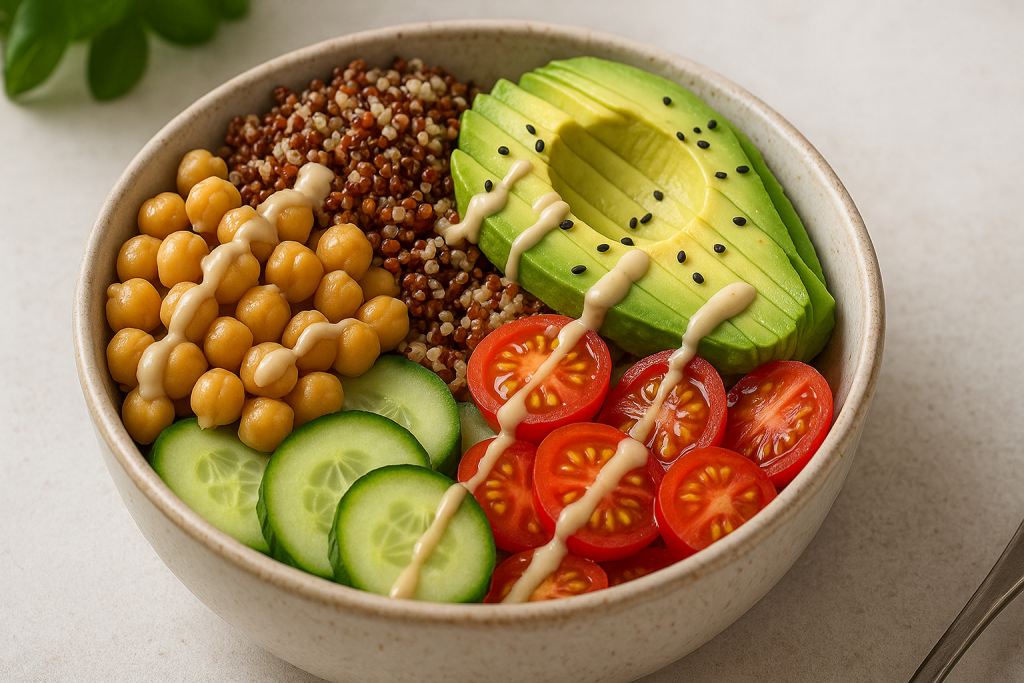
4. Greek Yogurt Parfait with Nuts and Seeds
Greek yogurt contains double the protein of regular yogurt. Layer it with berries, chopped nuts like almonds or walnuts, and sprinkle chia or hemp seeds for a satisfying breakfast or snack.
Healthy Tip: Opt for plain, unsweetened yogurt and add a touch of honey or maple syrup for natural sweetness.
5. Black Bean and Sweet Potato Burritos
Black beans are an excellent vegetarian protein source. Combine them with roasted sweet potatoes, brown rice, salsa, and a sprinkle of cheese in a whole wheat wrap for a delicious, protein-rich meal.
Meal Prep Idea: Prepare burritos in advance and freeze for a convenient grab-and-go lunch.
6. Tempeh Stir-Fried Rice
Tempeh, made from fermented soybeans, is high in protein and has a firm, meaty texture. Stir-fry with cooked brown rice, carrots, peas, and tamari sauce for a flavorful meal.
Nutrition Fact: Tempeh contains beneficial probiotics from fermentation, supporting gut health.
7. Paneer Tikka Masala
Paneer is a type of fresh cheese popular in Indian cuisine, loaded with protein. Marinate cubes of paneer in yogurt and spices, then grill and serve with a creamy tomato-based masala sauce.
Serving Suggestion: Pair with brown rice or whole wheat naan for a complete meal.
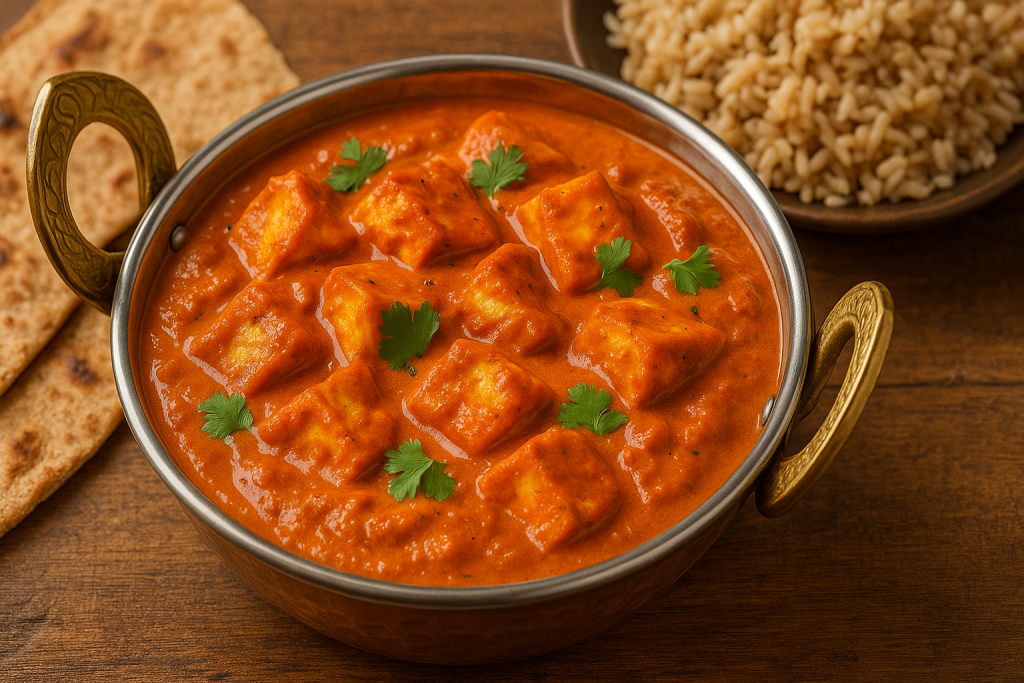
8. Egg and Vegetable Frittata
Eggs are a gold standard for vegetarian protein. Whisk eggs with diced vegetables such as tomatoes, zucchini, and spinach, then bake for a filling breakfast, lunch, or dinner.
Time Saver: Frittatas can be made ahead and enjoyed cold or reheated.
9. Red Lentil Dhal with Brown Rice
This Indian-inspired lentil stew is packed with protein and flavor. Serve with brown rice or quinoa for a balanced, satisfying meal.
Spice it Up: Add ginger, garlic, turmeric, and garam masala for antioxidant benefits and bold taste.
10. Edamame and Vegetable Sushi Rolls
Edamame (young soybeans) are rich in protein and fiber. Use them as a filling in sushi rolls alongside cucumber, avocado, and carrot for a fun, hands-on meal.
Party Idea: Prepare sushi rolls as a group activity or for meal prepping lunches.
11. Seitan Stir-Fry with Broccoli and Peppers
Seitan, also known as wheat meat, offers one of the highest plant-based protein levels. Stir-fry with broccoli, bell peppers, and your favorite Asian-inspired sauce for a satisfying dinner.
Allergy Note: Seitan is not suitable for those with gluten intolerance.
12. Cottage Cheese and Chickpea Salad
Combine cottage cheese with chickpeas, cherry tomatoes, cucumber, red onion, and fresh herbs for a refreshing, protein-packed salad that’s perfect for lunch or a light dinner.
Tip: Drizzle with olive oil and lemon juice for extra flavor and healthy fats.
Tips for Increasing Protein in Vegetarian Meals
Boosting protein in a vegetarian diet is simple with a few practical strategies. These tips will help you maximize your protein intake without sacrificing flavor or variety.
- Include legumes in salads, soups, and grain bowls.
- Swap regular pasta for legume-based pasta (e.g., lentil or chickpea pasta) for added protein.
- Add nuts and seeds to oatmeal, yogurt, and baked goods.
- Use Greek yogurt as a base for dips, dressings, and smoothies.
- Experiment with meat alternatives like tempeh and seitan to diversify protein sources.
- Pair whole grains with legumes to create complete proteins in meals.
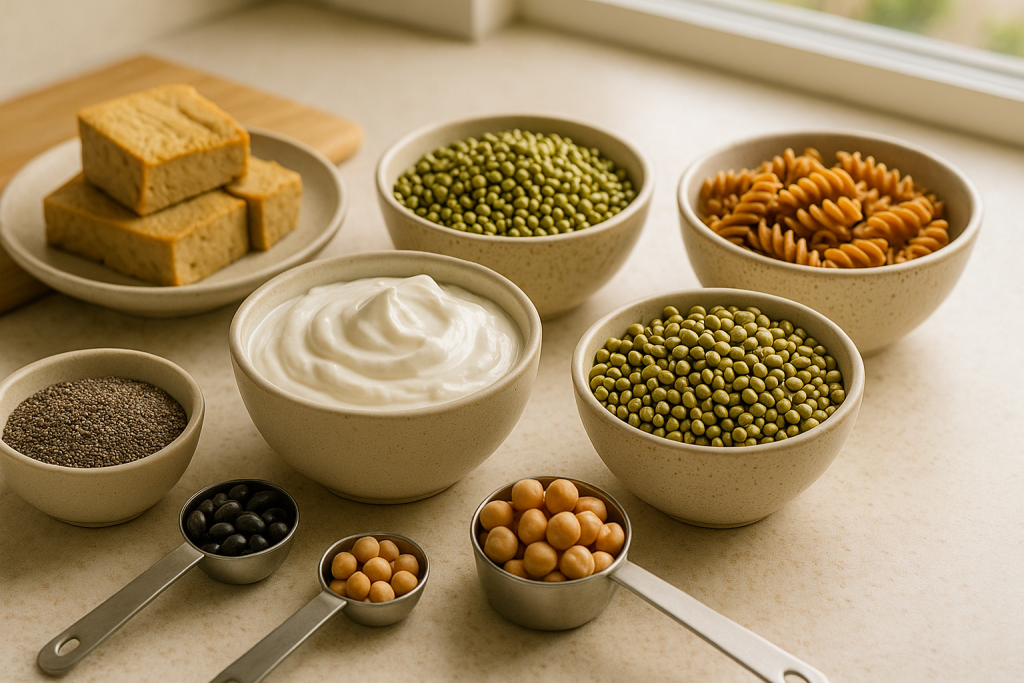
FAQs About Protein in a Vegetarian Diet
How much protein do vegetarians need daily?
The recommended dietary allowance (RDA) for protein is about 0.8 grams per kilogram of body weight for adults. However, those who are physically active or pregnant may require more. Most vegetarians meet their needs easily with diverse protein sources.
Can you build muscle on a vegetarian diet?
Yes! Many athletes and fitness enthusiasts thrive on a vegetarian diet by consuming adequate amounts of high-protein foods like lentils, tofu, eggs, and dairy.
What are complete vs. incomplete proteins?
Complete proteins provide all nine essential amino acids and are found in foods like soy, quinoa, eggs, and dairy. Most plant proteins are incomplete, but combining complementary foods (e.g., beans and rice) ensures all amino acids are consumed.
Conclusion: Enjoy a Protein-Packed Vegetarian Lifestyle
Achieving your protein goals on a vegetarian diet is easier than ever with a variety of delicious, protein-rich meal options. Whether you prefer classic dishes like lentil dhal or modern favorites like buddha bowls, these recipes will keep your diet balanced and satisfying. Experiment with new ingredients, mix up your meals, and enjoy the many health benefits of a vegetarian lifestyle rich in protein.
